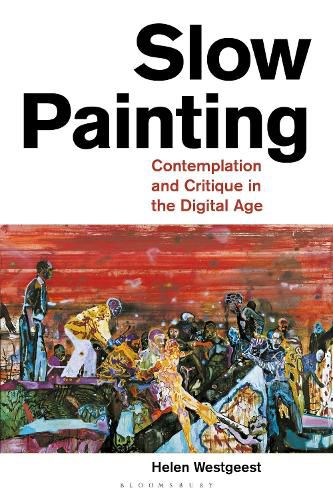Readings Newsletter
Become a Readings Member to make your shopping experience even easier.
Sign in or sign up for free!
You’re not far away from qualifying for FREE standard shipping within Australia
You’ve qualified for FREE standard shipping within Australia
The cart is loading…






The abundance of images in our everyday lives-and the speed at which they are consumed-seems to have left us unable to critique them. To rectify this situation, artists such as Daniel Richter, Jaune Quick-to-See Smith, and Artur Zmijewski have demonstrated that painting is brilliantly equipped to produce ‘slow images’ that enable, encourage and reward reflection. In this book, Helen Westgeest attempts to understand how various forms of slow painting can be used as tools to interrogate the visual mediations we encounter daily.
Painting was expected to disappear in the digital age but, through interactive painting performances and painting-like manipulated photographs and videos, Westgeest shows how photography, video and new media art have themselves developed the visual strategies that painting had already mastered. Moreover, the fleeting nature of digital mass media appears to have unlocked a desire for more physically stable and enduring pictures, like paintings. Slow Painting charts how, in a world where the constant quest for speed can leave us exhausted, the appeal of this ‘slower medium’ has only grown.
$9.00 standard shipping within Australia
FREE standard shipping within Australia for orders over $100.00
Express & International shipping calculated at checkout
The abundance of images in our everyday lives-and the speed at which they are consumed-seems to have left us unable to critique them. To rectify this situation, artists such as Daniel Richter, Jaune Quick-to-See Smith, and Artur Zmijewski have demonstrated that painting is brilliantly equipped to produce ‘slow images’ that enable, encourage and reward reflection. In this book, Helen Westgeest attempts to understand how various forms of slow painting can be used as tools to interrogate the visual mediations we encounter daily.
Painting was expected to disappear in the digital age but, through interactive painting performances and painting-like manipulated photographs and videos, Westgeest shows how photography, video and new media art have themselves developed the visual strategies that painting had already mastered. Moreover, the fleeting nature of digital mass media appears to have unlocked a desire for more physically stable and enduring pictures, like paintings. Slow Painting charts how, in a world where the constant quest for speed can leave us exhausted, the appeal of this ‘slower medium’ has only grown.